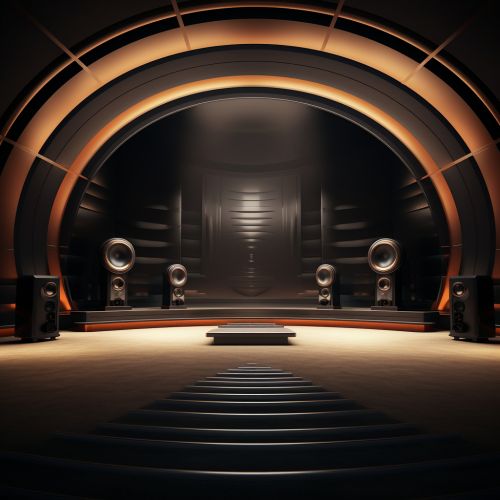Tomlinson Model
Overview
The Tomlinson Model, also known as the Tomlinson Holman eXperiment (THX), is a high-fidelity audio reproduction standard for movie theaters, screening rooms, home theaters, computer speakers, gaming consoles, and car audio systems. The model was developed by Tomlinson Holman at George Lucas's company, Lucasfilm, in 1983. The goal of the model is to reproduce audio as closely as possible to the original recording, with minimal noise and distortion.
History
The development of the Tomlinson Model began in the early 1980s when Tomlinson Holman, a renowned audio engineer, was working at Lucasfilm. Holman was tasked with improving the audio quality of the company's films, particularly for the Star Wars franchise. The result was the creation of the Tomlinson Model, which set new standards for audio reproduction in movie theaters and eventually in various other applications.


Principles
The Tomlinson Model is based on several key principles. The first is the accurate reproduction of sound, which means that the audio output should be as close as possible to the original recording. This is achieved through the use of high-quality audio equipment and careful calibration.
The second principle is the reduction of noise and distortion. This is accomplished through the use of noise reduction techniques and high-quality components that minimize distortion.
The third principle is the creation of a realistic sound field. This involves the use of multiple speakers to create a three-dimensional sound field that mimics the way sound is experienced in the real world.
Applications
The Tomlinson Model has been applied in a variety of settings, including movie theaters, home theaters, computer speakers, gaming consoles, and car audio systems.
In movie theaters, the model is used to ensure that the audio quality matches the high-quality visuals. This involves the use of multiple speakers, subwoofers, and amplifiers, all carefully calibrated to create a realistic sound field.
In home theaters, the model is used to create a cinema-like audio experience. This involves the use of high-quality speakers and subwoofers, as well as careful calibration to ensure accurate sound reproduction.
In computer speakers and gaming consoles, the model is used to enhance the audio experience. This involves the use of high-quality speakers and headphones, as well as software that enhances the audio output.
In car audio systems, the model is used to create a high-quality audio experience on the road. This involves the use of high-quality speakers, subwoofers, and amplifiers, as well as careful calibration to ensure accurate sound reproduction.
Future Developments
As technology continues to advance, it is expected that the Tomlinson Model will continue to evolve. Future developments may include the use of advanced digital signal processing techniques to further enhance audio quality, as well as the integration of virtual reality technology to create even more immersive audio experiences.
